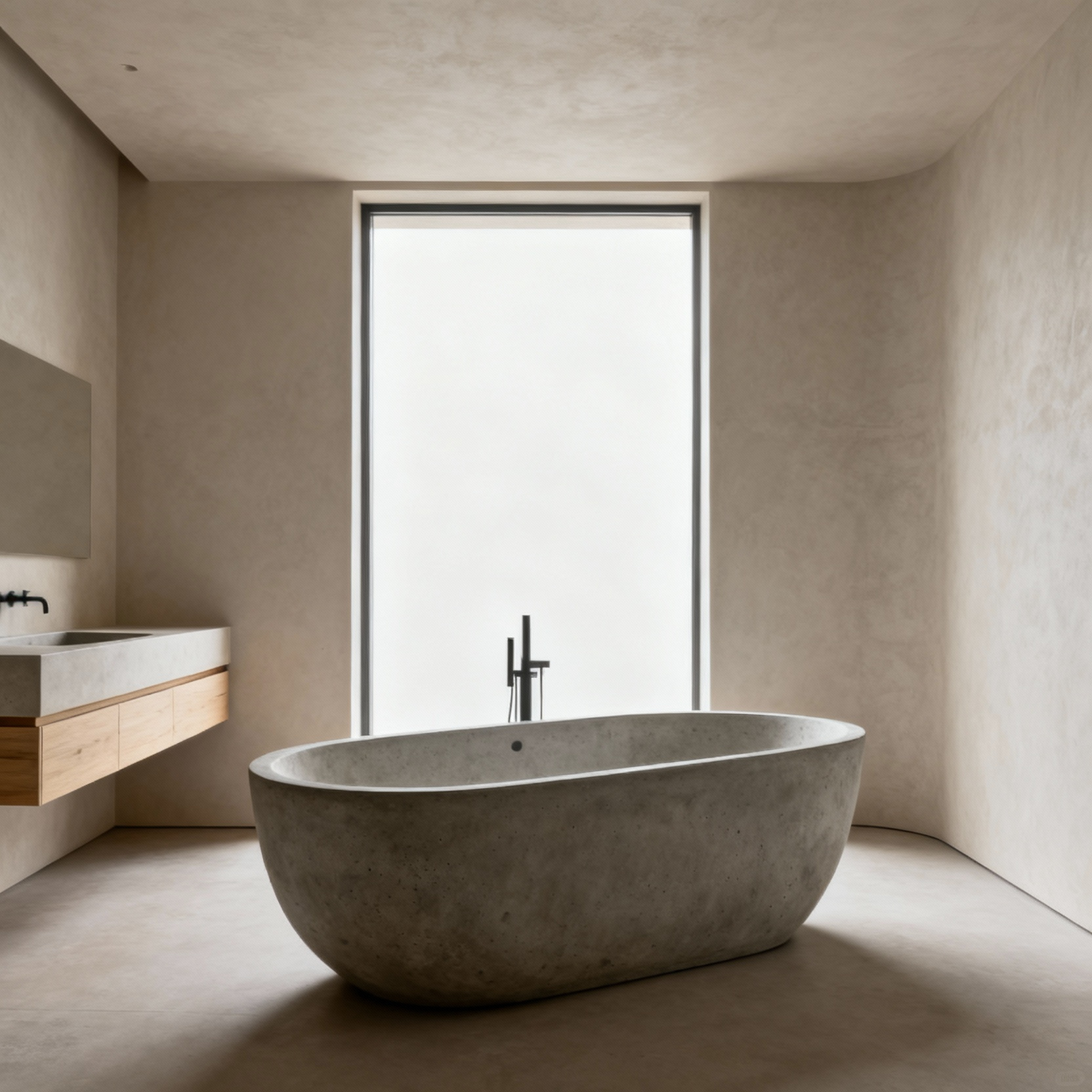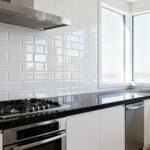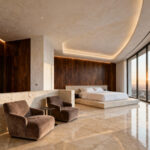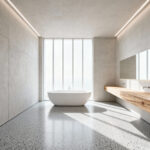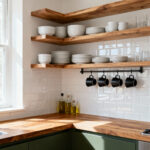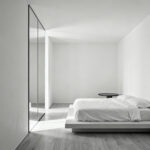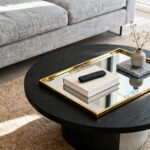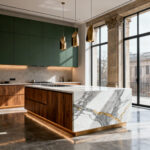A promise I make to all my clients is this: your bathroom can, and should, be more than a room of utility. It ought to be a bespoke sanctuary, a space that reflects your aesthetic narrative with quiet confidence. As a design correspondent with years spent in the world of high-end interiors, I’ve seen that the most sublime retreats aren’t born from chasing trends, but from the thoughtful curation of elements that marry form, function, and an intrinsic, almost poetic beauty.
These are not fleeting fancies; they are the considered investment decisions that consistently forge spaces of enduring elegance. After years of observing what truly works, I’ve distilled the principles down to these 20 essential bathroom decorative ideas. Think of this not as a checklist, but as a journey. We will move from foundational philosophies to the rich language of materials, then to the intelligent orchestration of space, and finally, to the personal refinements that make a room uniquely yours. This is how you cultivate a space that feels both current today and sophisticated for decades to come.
Foundational Philosophies: Cultivating an Enduring Aesthetic Narrative (Part 1)
Before a single tile is laid, the most refined bathrooms begin with a clear philosophy. This is about establishing the core principles that will guide every decision, ensuring the space feels harmonious and intentional, not merely decorated. It’s the invisible architecture that supports enduring style.
1. Harmonizing Proportions Through Strategic Fixture Selection
Everything in a sophisticated space begins and ends with proportion. This isn’t about preference; it’s a fundamental principle of design. The balance of the entire room is dictated by the scale of your core fixtures—the freestanding tub, the vanity, the sanitary ware. Get this wrong, and no amount of beautiful material can salvage the dissonance. A grand, cast-iron tub needs room to breathe; crowd it, and it looks clumsy, not commanding.

The key is to create a visual dialogue between the objects and the space itself. In a master en-suite with generous proportions, a monumental central vanity can serve as a stunning anchor. But in a more modest powder room, the same piece would be suffocating. Here, you might opt for a slim, elegant pedestal sink to maximize the feeling of openness. In my high-end interior design practice, the first thing I assess is the negative space—the areas you leave empty. It’s this intentional quietness that allows the beauty of each fixture to truly resonate.
2. Mastering the Visual Dialogue with an Intentional Color palette
Color is the most potent, non-verbal communicator in design. It dictates the atmosphere before you even register a single object. Choosing a color palette isn’t about picking a fashionable shade; it’s about orchestrating a visual dialogue that tells the story you want your sanctuary to tell. A deep charcoal can create a dramatic, cocooning effect, while a palette of soft, tonal whites and stones can feel restorative and serene.

Remember that material and light are color’s closest partners. The same greige paint will read completely differently on a smooth wall versus a textured one, and it will shift dramatically from morning light to evening’s incandescent glow. This is why I insist on testing large swatches in the actual space at different times of day. It’s the only way to understand how your chosen hue will truly live in the room and contribute to your collection of bathroom decorative ideas.
3. Implementing Biophilic design Principles for Organic Serenity
There is an inherent human need to connect with nature—a principle we call biophilia. Integrating this into the bathroom is one of the most powerful ways to create a sense of organic serenity. This goes far beyond placing a lonely orchid on the windowsill. It’s about a foundational commitment to incorporating natural elements that foster genuine well-being.

Think in layers. Start with materials like unlacquered wood for cabinetry or honed natural stone that feels raw and honest. Maximize natural light with strategically placed windows or skylights. And yes, introduce living greenery—ferns, snake plants, anything that thrives in humidity becomes a living sculpture. From my work in high-end interior design, I learned that even the sound of water from a rainfall showerhead, when intentionally chosen, contributes to this feeling of a natural grotto, transforming a simple shower into a restorative experience.
4. Defining Your Design Ethos: From Minimalist Sanctum to Opulent Retreat
Ultimately, all these principles must serve a singular, personal vision. You must define your design ethos. Are you cultivating a minimalist sanctum, where clarity and function reign supreme? Or are you crafting an opulent retreat, a space of lavish materials and artisanal details? Without this North Star, your design risks feeling directionless, a collection of beautiful but unrelated ideas.

This ethos will inform every choice. The minimalist will gravitate towards polished concrete, seamless storage, and frameless glass. Their luxury is in the perfection of the line and the absence of clutter. The maximalist, in contrast, may embrace decadent marble with dramatic veining, gilded fixtures, and intricate mosaic details. Neither is right or wrong, but the commitment to one vision is what creates a powerful, cohesive, and deeply personal space.
Foundational Philosophies: Cultivating an Enduring Aesthetic Narrative (Part 2)
Continuing on from our core principles, we now explore the more subtle, yet powerful, concepts that underpin a truly sophisticated space. It is often what you don’t see—the masterful use of empty space and intelligent design—that speaks the loudest.
5. Leveraging Negative Space as a Design Element for Visual Clarity
In luxury design, what you leave out is as important as what you put in. Negative space is not emptiness; it is an active design element that gives every other object in the room significance. It is the quiet pause in a visual sentence that allows key features to be heard. A bathroom crowded with objects, no matter how beautiful, creates a sense of visual static. True elegance is articulated through restraint.

This philosophy is best expressed through Wall-Mounted Vanities that free the floor plane, creating an illusion of spaciousness. It’s found in seamless, handleless storage that conceals the chaos of daily life. I often encourage my clients to resist filling every wall. Allow a pristine stretch of honed marble or perfectly finished plaster to be its own statement. A single, exquisitely crafted bath caddy or a striking piece of art then commands attention with purpose, rather than competing for it.
Material Poetics: Sculpting Tactile Experiences and Visual Richness (Part 1)
The soul of a luxury bathroom is expressed through its materials. This is about more than just what you see; it’s about what you feel. The cool weight of stone, the organic warmth of wood—these tactile experiences are what transform a room into an immersive sanctuary.
6. Curating a Palette of Exquisite Natural Stones: Marble, Travertine, and Onyx
There’s an undeniable gravitas to natural stone. Each slab is a piece of geological artistry, a unique story told over millennia. Marble is the icon, of course—from the soft, painterly veining of Carrara to the dramatic gold-tinged patterns of Calacatta. Travertine offers something different: an earthier, more ancient sophistication that feels both rugged and refined. And then there is onyx, which possesses a captivating translucence that feels almost magical when backlit.

The application of these stones can define the entire mood of the room. A monolithic slab of marble behind a freestanding tub is not just a wall covering; it is the art. Travertine flooring can ground a space with its warm, sandy tones. Onyx is best reserved for moments of high drama—a vanity that glows from within, for instance. What I tell my clients is that choosing stone is like choosing a life partner for your home; it’s a commitment to a character that will evolve and deepen over time.
7. Integrating Artisanal Timber: From Reclaimed Accents to Custom Cabinetry
To balance the coolness of stone and tile, the warmth of artisanal timber is essential. Wood introduces a necessary layer of organic texture and biophilic comfort. It is the element that makes a bathroom feel like a sanctuary, not an institution. The species you choose tells a story—teak for its water-resistant durability, walnut for its deep, luxurious tone, or rift-sawn oak for its clean, contemporary grain.

Bespoke vanity units are a natural focal point, grounding the design with their presence. But think beyond the obvious. A slatted timber screen can introduce a spa-like tranquility, while open shelving in a beautiful solid wood provides a place for curated displays. Even a simple, hand-carved wooden stool beside the tub can soften the entire space. It’s a tactile reminder of nature, a moment of warmth in a room of hard surfaces.
8. Exploring the Luminescence of Architectural Glass and Bespoke Mirroring
Glass and mirrors are the masters of illusion in a bathroom. They sculpt light, expand horizons, and create a dynamic interplay between reflection and reality. We must think beyond the purely functional. A shower enclosure made of clear, low-iron glass virtually disappears, maintaining the room’s expansive feel. Fluted or reeded glass, however, introduces a beautiful textural dimension, distorting views just enough to create intrigue and privacy.

Mirrors, when used on a grand architectural scale, are transformative. An entire wall clad in a subtly antiqued mirror can lend a sense of historical grandeur and incredible depth. A custom, oversized mirror above a vanity not only serves its purpose but becomes the room’s focal point, amplifying light and reflecting your carefully chosen bathroom decorative ideas. It’s a powerful tool for redefining a room’s perceived boundaries.
9. Selecting Opulent Metallics: Warm Brass, Polished Nickel, and Dark Bronze Patinas
The metalwork in a bathroom is its jewelry. These are the tactile touchpoints you interact with every day, and they should feel as good as they look. Each metal has its own personality. Unlacquered brass is my personal favorite; it’s a living finish that develops a rich, unique patina over time, telling the story of its use. It has a warmth and authenticity that is simply unmatched.

Polished nickel offers a cooler, more classic elegance with a subtle champagne undertone that feels more sophisticated than chrome. Dark, oil-rubbed bronze provides a grounding strength, creating a powerful contrast against lighter materials. Whatever you choose, be intentional. The weight of a solid brass faucet or the satisfying click of well-made hardware affirms a commitment to quality that transcends trends.
Material Poetics: Sculpting Tactile Experiences and Visual Richness (Part 2)
Here, we move past the foundational materials to explore surfaces that engage the senses on a deeper level. It is through texture and bespoke treatments that a space acquires its unique character and haptic richness.
10. Introducing Textural Depth with Bespoke Tilework and Surface Treatments
A truly exceptional bathroom is a feast for the senses, and that includes touch. Uniform, flat surfaces can feel sterile. The art is in the layering of textures to create visual and haptic interest. This is where bespoke tilework and innovative surface treatments come into play, offering an incredible palette for creating depth.

Think of the beautiful imperfections of Moroccan zellige tiles, where each hand-cut piece refracts light differently, creating a living, undulating surface. Contrast this with the seamless, monolithic drama of large-format porcelain slabs. Or consider Venetian plaster, which gives walls a deep, burnished patina that changes with the light. Juxtaposing these elements—a rough, tactile feature wall against a smooth, polished vanity, for example—is how you build a rich, multi-layered environment that feels both curated and alive.
Spatial Harmonization: Orchestrating Form, Function, and Illumination (Part 1)
A beautiful bathroom that functions poorly is a design failure. True luxury lies in the seamless marriage of form and function, where the space is orchestrated so intelligently that its use feels intuitive and effortless. This is spatial harmonization.
11. Optimizing Flow and Ergonomics Through Intelligent Layout Configuration
The ultimate luxury in any space is effortless flow. A well-designed bathroom anticipates your movements, creating a graceful choreography for your daily rituals. This is ergonomics elevated to an art form. It’s about ensuring clear, unobstructed paths between the main zones—vanity, shower, toilet, and bath—and providing ample clearance for comfortable use.

When planning, consider the “wet” and “dry” zones and how to create a subtle separation. A curbless, walk-in shower not only looks sleek but also creates a seamless transition. Wall-mounted toilets and vanities free up floor space, enhancing this feeling of openness. Every detail matters, right down to placing the towel rail within perfect reach of the shower. The goal is an environment where every interaction is fluid and intuitive.
12. Crafting Bespoke Millwork for Seamless Storage and Aesthetic Cohesion
Visual serenity is impossible without masterful storage. This is where bespoke millwork becomes not a luxury, but a necessity. It’s about creating flawlessly integrated storage solutions that conceal the clutter of everyday life, allowing the beauty of the design to take center stage. This isn’t just cabinetry; it is functional architecture.

Unlike off-the-shelf options, custom pieces can be tailored to the exact dimensions and architectural quirks of your space, turning awkward corners into elegant features. A vanity that stretches wall-to-wall creates a clean, uninterrupted line. Full-height, concealed cabinets can house linens and toiletries, disappearing into the wall when closed. Here’s what’s interesting: the most luxurious projects I’ve worked on are defined by what you don’t see. The technology, the clutter, the mechanics—it’s all artfully hidden within perfectly executed millwork.
13. Elevating the Ambience with Multi-Layered, Dimmable Lighting Schemas
Light is the alchemist of atmosphere; it can sculpt a space, highlight texture, and dictate the mood entirely. A single overhead fixture is a cardinal sin in bathroom design. A sophisticated space requires a multi-layered lighting schema, where different sources work in concert. I always design with at least three layers: ambient, task, and accent lighting.

Ambient light provides the overall glow, often from recessed downlights. Task lighting is critical at the vanity—think flattering, shadow-free sconces at eye level. Accent lighting is used to draw attention to a beautiful architectural detail or a piece of art. Most importantly, every single circuit must be on a dimmer. This non-negotiable detail allows you to transition the room from a bright, invigorating morning space to a serene, low-lit evening retreat at the touch of a button.
14. Utilizing Large-Scale Architectural Mirrors for Amplified Dimension
A mirror is far more than a reflective surface; it’s a powerful architectural tool. When used on a grand scale, it can manipulate your perception of light and space in profound ways. In a smaller bathroom, a full-wall mirror can instantly double the room’s perceived size, erasing any sense of confinement.
Position a large mirror opposite a window, and you amplify natural light, bouncing it deep into the room. It becomes a dynamic element, reflecting not just you, but the changing sky, the textures of the opposite wall, and your other thoughtfully chosen bathroom decorative ideas. A large, frameless mirror offers a clean, contemporary look, while a beautifully framed piece can act as a stunning work of art in its own right.
Spatial Harmonization: Orchestrating Form, Function, and Illumination (Part 2)
Continuing our theme, we now look at how the less visible elements of design contribute to the overall harmony of the space. Smart, integrated technology, when executed with subtlety, can elevate convenience into an art form.
15. Integrating Intelligent Smart Technology for Automated Comfort and Convenience
Technology in the bathroom should be a silent partner. It should anticipate your needs and enhance your comfort without ever demanding attention. The best smart technology is seamlessly integrated, almost invisible. Its purpose is to automate comfort and make daily rituals feel effortless, embodying a sense of understated, intuitive luxury.

This manifests in underfloor heating that keeps the room at a perfect temperature, or mirrors that defog automatically. It’s in thermostatic shower controls that deliver your precise temperature and pressure at the touch of a button. Even smart lighting that mimics natural daylight cycles to gently wake you can be integrated. The philosophy is simple: technology should serve the experience, not dominate it. When hidden within the architectural fabric, it becomes an integral part of a truly refined sanctuary.
Curated Refinements: Personalizing and Elevating the Bespoke Sanctuary (Part 1)
With the foundation laid, we arrive at the final, most personal layers. These are the curated refinements that transform a beautifully designed bathroom into a bespoke sanctuary that is uniquely yours. It is in these details that the soul of the space is truly found.
16. Artfully Selecting and Positioning Contemporary Artworks or Sculptural Pieces
Bringing fine art into the bathroom is a declaration that this space is as important as any other in the home. It elevates daily rituals by surrounding you with beauty and intellectual stimulation. A piece of art should not be an afterthought; it should be a focal point that resonates emotionally.

Of course, the environment is a key consideration. Sealed photographic prints, acrylics, or metal sculptures are more resilient than works on paper. Placement is everything. A dramatic painting above a freestanding tub creates a stunning tableau for contemplation. A small, intriguing sculpture nestled in a vanity niche becomes a hidden gem. This intentional act makes art an intimate part of your daily life.
17. Introducing Exotic Botanicals for a Touch of Verdant Vitality
Living plants infuse a bathroom with vitality. This embrace of biophilic design fosters a connection to the natural world and enhances our sense of well-being. Look for botanicals that thrive in humidity—orchids, with their sculptural elegance, or lush ferns, with their intricate foliage.

The vessel is just as important as the plant itself. A beautiful ceramic planter or a honed marble pot becomes part of the decor. A single, dramatic botanical can serve as a living sculpture, while trailing plants can soften the hard lines of shelving or architecture. Their presence purifies the air and provides a constant, gentle reminder of the world outside, making the sanctuary feel complete.
18. Mastering the Olfactory Landscape with Signature Scents and Diffusers
Of all the senses, scent is the most powerfully tied to memory and emotion. Mastering the olfactory landscape of your bathroom is a subtle but incredibly impactful act of personalization. This isn’t about overpowering air fresheners; it’s about cultivating a signature scent that defines the atmosphere—a final, invisible layer of luxury.

Invest in high-quality reed diffusers with complex, artisanal fragrances—notes of cedarwood, bergamot, or sandalwood. An elegant candle, lit during a bath, provides not just scent but a warm, flickering glow. The key is subtlety. What really gets me is when I walk into a space and the scent is so perfectly chosen it feels like an extension of the design itself. It’s a sign of a truly considered environment and a must-have for exceptional bathroom decorative ideas.
19. Designing Dedicated Vignettes for Curated Luxury Apothecary Collections
Even everyday essentials can be elevated into a beautiful display. Designing a dedicated vignette for your luxury apothecary collection transforms functional items into a curated statement of personal care. It’s an appreciation for the quality and aesthetic of the objects you use on your body every day.

Group elegant glass bottles and jars on a honed marble tray. Decant hand soap and lotions into beautiful, uniform ceramic or glass vessels to create a sense of visual calm. Arrange these small collections on a vanity, within an open niche, or on a shelf. This small act of curation transforms the mundane into a mindful ritual, a daily interaction with organized beauty.
Curated Refinements: Personalizing and Elevating the Bespoke Sanctuary (Part 2)
Finally, we consider the most immersive refinements. These are the elements that engage the senses on a holistic level, completing the transformation from a functional room to a truly personal and restorative retreat.
20. Implementing High-Fidelity Audio Integration for an Immersive Sensory Experience
Just as scent shapes the unseen atmosphere, so too does sound. A truly immersive sanctuary considers the auditory landscape. High-fidelity audio, seamlessly integrated, transforms the bathroom into a private concert hall or a meditative escape. It’s not about a tinny bluetooth speaker on the counter; it’s about creating a rich, enveloping soundscape.

The best systems use marine-grade speakers that are completely invisible, recessed into the ceiling or hidden behind the walls, so that crystal-clear sound seems to emanate from the space itself. Controlled via a smart home system, you can curate playlists for any mood—energizing music for the morning, or calming ambient sounds for an evening soak. It’s the ultimate sensory indulgence, a final layer that makes the retreat complete.
Conclusion
Our journey through these twenty bespoke bathroom decorative ideas has been about more than just aesthetics; it has been about cultivating an ethos. We’ve seen how true luxury lies not in trends, but in intentionality, craftsmanship, and a deep understanding of how space can shape our well-being. From the foundational harmony of proportion to the immersive quality of integrated sound, each element works in concert to create a holistic experience.
My advice is to approach this not as a decorator, but as a curator of your own private life. Select pieces and materials whose quality and character resonate with you. Be guided by the principles of light, texture, and flow. The ultimate goal is to craft a sanctuary that feels not just beautifully designed, but deeply and authentically yours—a space for daily restoration and quiet refuge. For in creating such an environment, you are investing in the quality of your own life, one thoughtful detail at a time.
